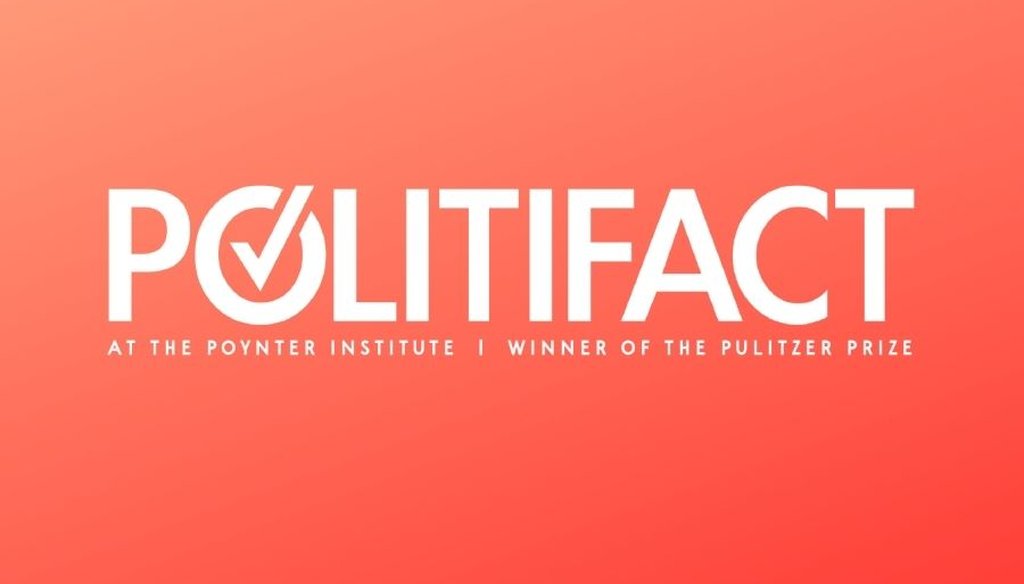Stand up for the facts!
Our only agenda is to publish the truth so you can be an informed participant in democracy.
We need your help.
I would like to contribute

The Republican analysis of the Democratic health care bill.
A few months ago, a chain e-mail purporting to be a
line-by-line analysis
of the House health care reform bill reached in-boxes all over the country, warning people of the dire consequences of the Democratic plans for reform. Taking a page from the same playbook, the House Republican Conference has created
a similar list
for the new health care bill that will be coming to the House floor in the next few weeks.
The Republican analysis, which provides talking points that Republican members use on radio and TV, portrays the Democratic bill as overly restrictive, bureaucratic and a threat to senior citizens. The GOP analysis isn't quite as over-the-top as the chain e-mail, but at times it crosses the line into outright distortion.
We should emphasize that the House bill has yet to be voted on, and aspects of it could change. The Senate has its own bill that is similar but has different approaches about how reform should be paid for and how various mandates should work.
Here's the text of the GOP analysis, followed by a PolitiFact ruling and a summary of our reporting, with links to more extended coverage:
Private individual insurance
"Page 94 - Section 202(c) prohibits the sale of private individual health insurance policies, beginning in 2013, forcing individuals to purchase coverage through the federal government."
False
. The health care reform bill seeks to regulate health insurers more closely, requiring them to cover people with pre-existing conditions and offer minimum benefit plans that cover preventive care. To do that, the government will require private individual health insurance policies to be sold through a health insurance exchange, a virtual marketplace that is run by the federal government. Starting in 2013, the government won't permit new sales of bare-bones policies that offer only catastrophic coverage, and there will be a number of other new regulations as well. Still, that's a far cry from prohibiting the sale of private individual health insurance policies. (Michelle Bachmann recently made a similar claim that
private insurance would be outlawed
, and we rated that Pants on Fire.)
Abortion coverage
"Page 110 - Section 222(e) requires the use of federal dollars to fund abortions through the government-run health plan — and, if the Hyde Amendment were ever not renewed, would require the plan to fund elective abortions."
Half True.
The latest version of the House bill incorporates
an amendment proposed by Rep. Lois Capps
, a Democrat from California. Her proposal sought to create a compromise on abortion, especially in regards to the public option, a basic insurance plan run by the government and offered as a choice on the health insurance exchange. The public option could offer abortion services, but if it does, those services would be paid for with segregated patient premiums, not public subsidies. The sticking point here is the term "federal dollars." If you consider federal dollars to be tax revenues, then the public option would not pay for abortion. On the other hand, if you consider "federal dollars" to be any money handled by a federal agency, then the public option would pay for abortion. That's why we rate this statement Half True. As for the Hyde Amendment, that's a law that prohibits the use of federal funds for abortions except in cases of rape, incest or when the mother's health is in peril. This restriction applies to Medicaid, a health program for the poor. (States that offer abortion coverage to Medicaid recipients have to pay for it themselves and through separate mechanisms.) The Hyde Amendment also applies to federal health care coverage for federal employees and for active and retired military. If the Hyde Amendment were repealed, it seems likely that the public option would then cover elective abortion without the need to segregate public premiums. The health care reform bill says abortion services are covered "for which the expenditure of Federal funds appropriated for the Department of Health and Human Services is permitted, based on the law as in effect as of the date that is 6 months before the beginning of the plan year involved." We should add that the Hyde amendment must be renewed every year, and it has been renewed every year since 1976. (See our report about
how the Senate has handled the issue of abortion
.)
'Bureaucrats' dictating plans
"Page 111 - Section 223 establishes a new board of federal bureaucrats (the 'Health Benefits Advisory Committee') to dictate the health plans that all individuals must purchase."
False.
Under the health care reform plan, people will have to buy health insurance or pay a tax penalty, and policymakers have said they want everyone covered. The House bill also says what basic coverage should include: hospitalizations, physicians' visits, prescription drugs, mental health and substance abuse treatment, preventive care, maternity care, well-baby and well-child care, and durable medical equipment. But it doesn't provide specifics, like what kinds of prescription drugs or specific medical procedures must be covered. The bill creates the Health Benefits Advisory Committee to advise the secretary of Health and Human Services on what the specifics should be. The committee will have up to 27 members appointed by the president and the Comptroller General, and it will represent the major stakeholders in the health care system, according to the bill. The committee doesn't dictate health plans, though: It advises the secretary, who can reject the recommendations. Another important caveat is that the committee helps set a baseline for different types of coverage. People are then free to select any health plan they like that meets or exceeds the basic requirements. So the committee does not dictate which health plans all individuals must purchase.
'Government-run' plan
"Page 211 - Section 321 establishes a new government-run health plan that, according to non-partisan actuaries at the
Lewin Group
, would cause as many as 114 million Americans to lose their existing coverage."
False
. We've covered this claim
extensively
in
other
checks
. The Lewin Group study found that 114 million Americans would choose to move to the public option if it were cheaper than private insurance. The study assumed that the public option would pay doctors Medicare rates, but the latest version of the House bill contradicts that, by saying that the secretary of Health and Human Services must negotiate payment rates. The study also assumed that all employers and individuals would be allowed into the health care exchange during the third year. That seems unlikely; the legislation says that businesses will be phased into the exchange based on size, with the smallest allowed in first. The nonpartisan Congressional Budget Office projected that only 30 million would be allowed into the exchange by 2019 — far less than the Lewin Group's estimate of more than 114 million choosing the public option. So the Lewin Group study made assumptions that don't apply to the House bill. The claim here also misrepresents the study by saying people will "lose" their existing coverage, rather than people voluntarily switching to a lower-cost plan.
Members of Congress and public option
"Page 225 - Section 330 permits — but does not require — Members of Congress to enroll in government-run health care."
True.
No one — not members of Congress nor anyone else — is required to enroll in the public option, which opponents often refer to as government-run health care. This clause of the legislation says that members of Congress may enroll. The senators and representatives have to be given special permission because they work for a large employer (the United States government) and ordinarily would not be eligible for the health insurance exchange, which is where a person has to go to select the public option. This clause allows them to enroll in the public option, and it appears to be a concession to opponents of the plan who said members of Congress should be required to enroll in the public option. (That measure
failed
in committee
in both the House and the Senate.)
Coverage for immigrants
"Page 255 - Section 345 includes language requiring verification of income for individuals wishing to receive federal health care subsidies under the bill—while the bill includes a requirement for applicants to verify their citizenship, it does not include a similar requirement to verify applicants' identity, thus encouraging identity fraud for undocumented immigrants and others wishing to receive taxpayer-subsidized health benefits."
Half True.
Republicans have long complained that the reform bills don't do enough to
prevent illegal immigrants from fraudulently obtaining benefits
. The House bill includes a requirement for applicants to verify their citizenship, but it does not include other, more restrictive proposals to verify identity through various databases. The House bill also says that health care officials may not create databases with people's immigration or citizenship status. But we don't see evidence that the bill actively encourages identity fraud. The bill does include reporting requirements on how many people were denied subsidies based on immigration status and other statistics about enforcement measures.
Obama's tax promise
"Page 297 - Section 501 imposes a 2.5 percent tax on all individuals who do not purchase 'bureaucrat-approved' health insurance - the tax would apply on individuals with incomes under $250,000, thus breaking a central
promise
of then-Senator Obama's presidential campaign."
True.
All the health care reform proposals
require individuals to buy insurance
. The House bill does call for a 2.5 percent tax on people who do not buy health insurance, but it also says the tax "shall not exceed the applicable national average premium." People do not have to pay the tax if they already have insurance, and they are still free to select any policy they wish that meets new federal rules. The insurance does have to be "bureaucrat-approved" to the extent that all policies must meet new federal requirements. Whether the tax penalty breaks Obama campaign pledge is an issue for another day. Here at PolitiFact, we're waiting for a bill to actually pass before we rule on whether it violates his campaign pledge to
not raise taxes on those making less than $250,000
. (That promise is currently rated Compromise because Obama signed a bill raising taxes on cigarettes and other tobacco.)
'Tax on jobs'
"Page 313 - Section 512 imposes an 8 percent 'tax on jobs' for firms that cannot afford to purchase 'bureaucrat-approved' health coverage; according to an
analysis
by Harvard Professor Kate Baicker, such a tax would place millions 'at substantial risk of unemployment'—with minority workers losing their jobs at twice the rate of their white counterparts."
Half True.
This point refers to the House bill's employer mandate, which requires large employers to offer health insurance for their workers. (This is a major difference with the Senate bill, which is not expected to include an employer mandate.) So the House bill does tax employers that don't offer insurance. The Republicans say that Baicker's research shows that millions would be at risk for unemployment, and her research does show that. But the number of people who would actually lose their jobs, according to her projections, is much smaller. Baicker and co-author Helen Levy identified workers who lacked insurance and whose wages are so close to the minimum wage that employers will not be able to reduce their pay in order to pay for health insurance. That pool of uninsured, low-wage workers is 5.5 million. Of those, however, she concluded that a much smaller number — 224,284 — were "likely" to lose their jobs. And about 136,342 were likely to be racial and ethnic minorities, she concluded. She also wrote that those numbers would be fewer if small employers were exempt from the mandate. The House bill exempts employers with a payroll of less than $500,000.
'Surcharge' on small businesses
"Page 336 - Section 551 imposes additional job-killing taxes, in the form of a half-trillion dollar 'surcharge,' more than half of which will hit small businesses; according to a model developed by President Obama's senior economic advisor, such taxes could cost up to 5.5 million jobs."
False.
Obama's economic adviser — Christina Romer, chair of the White House Council of Economic Advisers — has never said that a tax in the health care bill would cost up to 5.5 million jobs. Republicans have used her 2007 research to develop
a calculation for job losses for any type of tax increase
. If you have a number for tax revenues generated, then this model will give you a number of jobs lost. But there are factors that make this type of analysis troublesome when it comes to the health care bill. Romer's 2007 research, for example, said that tax increases that fund spending for social programs tend to balance out, and economic growth stays on an even keel. Another problem is that the Republicans take tax increases that happen over 10 years and treat them as if they happen in one year, which inflates the numbers of jobs that might be lost. Finally, this particular Republican analysis includes more taxes than just the surtax of page 336; it also includes the employer mandates of page 313. We find this analysis to be problematic and contrary to how Obama's economic adviser said the model should work.
Impact on seniors
"Page 520 - Section 1161 cuts more than $150 billion from Medicare Advantage plans, potentially jeopardizing millions of seniors' existing coverage."
Half True
. This section phases out overpayments to Medicare Advantage, which are estimated to total $150 billion over 10 years. Medicare Advantage pays private insurance companies a set rate to treat Medicare beneficiaries who sign up. It was conceived as a cost containment measure on the theory that competition between private plans would drive down costs. But Medicare Advantage plans have consistently cost the government more per beneficiary than traditional fee-for-service Medicare costs. Insurance companies keep some of these extra fees, but they also pass on extra benefits to the people enrolled in the programs, such as dental and vision coverage, or gym memberships. Some plans pay the patient's monthly Medicare premium, which can amount to about $100. The cuts to Medicare Advantage would jeopardize existing coverage only to the extent that seniors
might lose extra benefits
or have to switch back to regular Medicare. The statement implies seniors are in danger of losing their core Medicare coverage, but that's not the case.
Government plan that will deny coverage
"Page 733 - Section 1401 establishes a new Center for Comparative Effectiveness Research; the bill includes no provisions preventing the government-run health plan from using such research to deny access to life-saving treatments on cost grounds, similar to Britain's National Health Service, which denies patient treatments costing more than £35,000."
False.
We've looked
previously
at
claims
that a new Center for Comparative Effectiveness Research would function like Britain's National Health Service, and found many differences between the two bodies. In the United States, comparative effectiveness research is a bureaucratic way of saying the government would do studies to find out which medical treatments and medications work better than others, and which are most cost-effective. The idea is that this would help doctors and patients make better-informed decisions about the most effective treatment strategies, and that it would save money over time. The bill says that the center may not "mandate coverage, reimbursement, or other policies for any public or private payer," which means the center will not tell insurance companies what they may or may not cover. Policymakers hope that private insurers and the public option will voluntarily apply the findings of comparative effectiveness research to implement the most cost-effective treatment. The center will not have the power that the National Health Service has to mandate coverage guidelines.
Tax promise, Part 2
"Page 1174 - Section 1802(b) includes provisions entitled 'TAXES ON CERTAIN INSURANCE POLICIES' to fund comparative effectiveness research, breaking Speaker Pelosi's promise that 'We will not be taxing [health] benefits in any bill that passes the House,' and the President’s promise not to raise taxes on families with incomes under $250,000."
Half True.
The bill includes a tax on insurers to pay for comparative effectiveness research; the tax is assessed based on the number of people insured and is expected to cost about $2 per person per year, and potentially less, so that the Center for Comparative Research Center is eventually funded at $375 million per year. This is not a direct tax on benefits. Generally speaking, however, insurers pass on tax increases to their customers in the form of increased rates. We don't think new taxes on insurance companies can be considered a tax on people who earn less than $250,000.
Our Sources
House Republican Conference,
Reading Guide - Pelosi Health "Reform" Bill
, Oct. 29, 2009
U.S. House of Representatives Energy and Commerce Committee,
HR 3962 - the Affordable Health Care For America Act
U.S. House of Representatives Ways and Means Committee,
HR 3962 - Section by Section
Kaiser Family Foundation,
Analysis of Affordable Health Care for America Act (H.R. 3962)
, accessed Nov. 4, 2009
Congressional Budget Office,
A preliminary analysis of H.R. 3962, the Affordable Health Care for America Act
, Oct. 29, 2009
U.S. House of Representatives, Energy and Commerce Committee,
the Capps amendment, original version
, July 30, 2009
Additional sources can be found by clicking through the links to previous PolitiFact coverage





















































